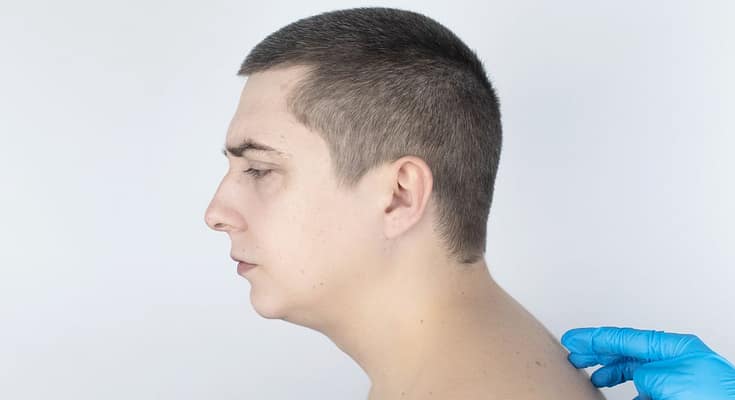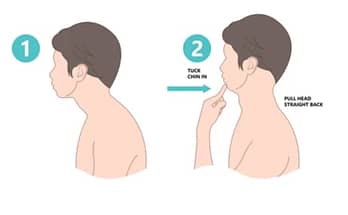The head is the most important part of our body. It controls everything we do; from breathing, eating and drinking, to sleeping and moving around. The amuscles that surround the head are known as the neck muscles. When these muscles are imbalanced, they can cause pain in the lower back or neck and shoulders.
In this article we will discuss how you can correct an anterior head carriage posture by strengthening your upper trapezius muscle.
What is Anterior Head Carriage?
Anterior head carriage, also known as forward head posture or FHP, is the condition in which your neck is bent forward. This can cause your chin to jut out in front of you. In addition to looking unattractive and aging, anterior head carriage can lead to serious health problems if left untreated.
It’s not just a cosmetic issue. It can lead to headaches, neck pain, shoulder pain and even back pain.
If you have forward head carriage, it’s important to identify the cause. This will help you choose the most effective treatment method for your condition.
Causes of Anterior Head Carriage
While there are many possible causes of anterior head carriage, some of the most common include slouching in a chair and poor posture. Injuries to the neck can also lead to anterior head carriage. If you have an injury that puts pressure on your spine or neck, it may be difficult for you to hold up your head properly.
Other potential causes include:
- Poor sleeping posture. Anterior head carriage can be caused by sleeping with your chin tucked into your chest at night because this position pulls on muscles in the back of the neck that support your head and shoulders.
- Stress and psychological factors
While some people have naturally strong muscle tone around their necks and shoulders, others have weaker muscles that may make them more prone to anterior head carriage over time if they don’t take steps to correct it early on (such as working out or doing other exercises).
Other psychological factors, such as depression and anxiety, can lead people to slouch more over time because they feel defeated by their struggles and don’t want to face them head-on.
Medical conditions Medical conditions that weaken muscles can cause anterior head carriage, such as muscle weakness caused by: Stroke. Tumors and infections. Neck injuries. Neurological disorders. Autoimmune diseases such as rheumatoid arthritis and lupus erythematosus (SLE).
Symptoms of Anterior Head Carriage
If you have an anterior head carriage, you may experience a variety of symptoms that are related to your posture. Some of the most common symptoms include:
- Neck and shoulder pain
- Headaches
- Neck stiffness
- Anxiety and depression (due to lack of self-confidence)
- Loss of balance (which can lead to falls)
- Trouble sleeping (because it’s hard to get into a good position for sleep)
As well as:
- Difficulty concentrating or focusing on tasks at hand because your mind is occupied by the negative thoughts associated with having poor posture rights now; this includes difficulty remembering things due to low energy levels caused by stress hormones released when your body experiences chronic pain stemming from poor posture causing muscles/joints being used improperly. These effects also affect mental clarity in general.
Treatments for Anterior Head Carriage
There are several things you can do to help correct your anterior head carriage.
- Try doing exercises that strengthen your neck muscles, such as the following:
- Chin tucks—tuck your chin to your chest for 10 seconds, and then return to neutral position. Repeat 10 times for 1 set. Do 2-3 sets of this exercise daily.
- Neck stretches—gently pull back on both sides of your head with both hands for 10 seconds each side (hold each stretch for 5 seconds), then relax. Repeat this sequence 5 times per day; hold each stretch for 20 seconds total per session (5 seconds at a time). Do 3-4 sessions daily until you feel improvement in flexibility and range of motion in the cervical spine (the neck area). Stretching is especially important if you’re working out or playing sports because it can reduce muscle spasms/tightness caused by an injury or poor posture during exercise or playtime activities like running, biking or swimming laps in a pool etcetera…
- Try sleeping on a firm pillow instead of soft pillows—This will help you keep your neck in a neutral position while sleeping, which can help prevent the forward position of your head during sleep. Try using a rolled-up towel or small pillow under your knees when lying down—This will help take pressure off your spine and lower back.
More tips for anterior head carriage
- Keep your chin tucked in
- Avoid slouching
- Sleep with a pillow under your head. This will help keep the neck long and prevent you from sleeping on your back, which can cause kyphosis (rounded shoulders) and increase the risk of heart disease. You should also avoid sleeping on either side as this increases tension in the muscles that run along the sides of the spine. Instead, try to sleep on your back or stomach with no pillow at all (or perhaps one very thin one).
- Don’t use a computer too much – A study published in June 2008 found that using a computer for more than three hours each day increased anterior head carriage by five degrees – even if you have good posture! So take regular breaks from staring at screens and get up off that chair every so often!
- Try a posture corrector – A posture corrector can help you keep your head over your shoulders and in line with the rest of your body. They are commonly used by people who have had spinal fusion surgery or scoliosis, but they can also be beneficial for anyone who wants to improve their posture.
If you want to try a posture corrector, be sure that it is adjustable so that it can be worn for long periods of time without causing discomfort. You should also make sure that the device has a flexible back support so that it allows your spine to move as necessary.
You may correct your condition through natural ways. It is not too late just yet.
You can correct the head carriage through natural ways. There is no need to go under the knife to correct it. The methods are simple and can be done even at home.
You may try doing these exercises everyday for a week or two, then you will notice a difference between before and after doing these exercises:
- Sit straight up in bed with your shoulders back and relaxed. Do not lean forward or backward as you sleep; this will only worsen your condition and make it harder for you to correct it later on
- Practice proper posture throughout the day by keeping your chin up when walking around, not slouching but standing tall with good posture in front of others, etc…
It’s important to understand that good posture is not just a cosmetic issue, it’s a health concern. Bad posture can lead to many different problems, including back pain and headaches. But one of the most concerning issues with poor posture is how it affects your neck and shoulders. It can cause tension in these areas which is why correcting anterior head carriage should be one of your top priorities when it comes time for exercise or physical therapy exercises aimed at improving posture.




